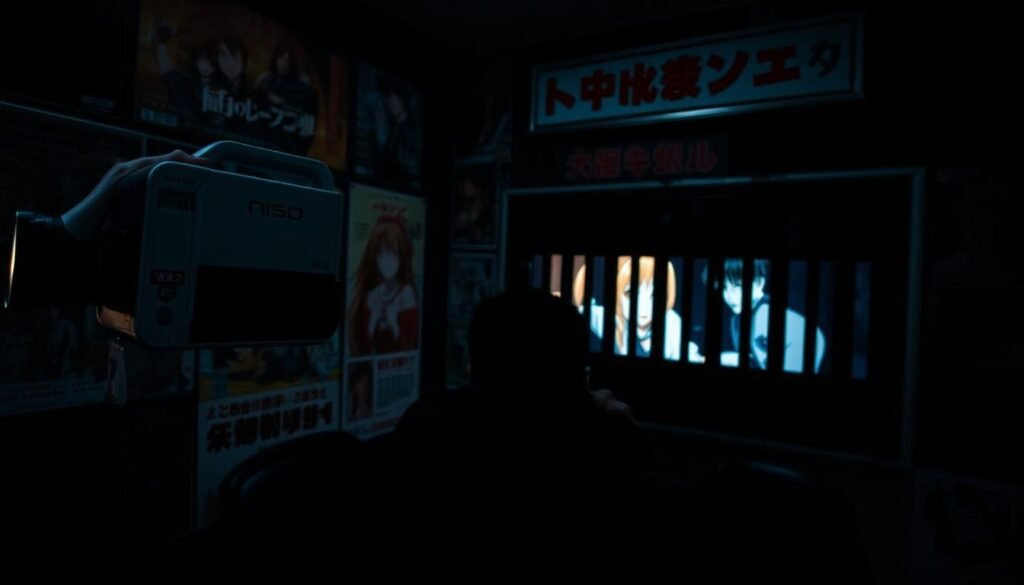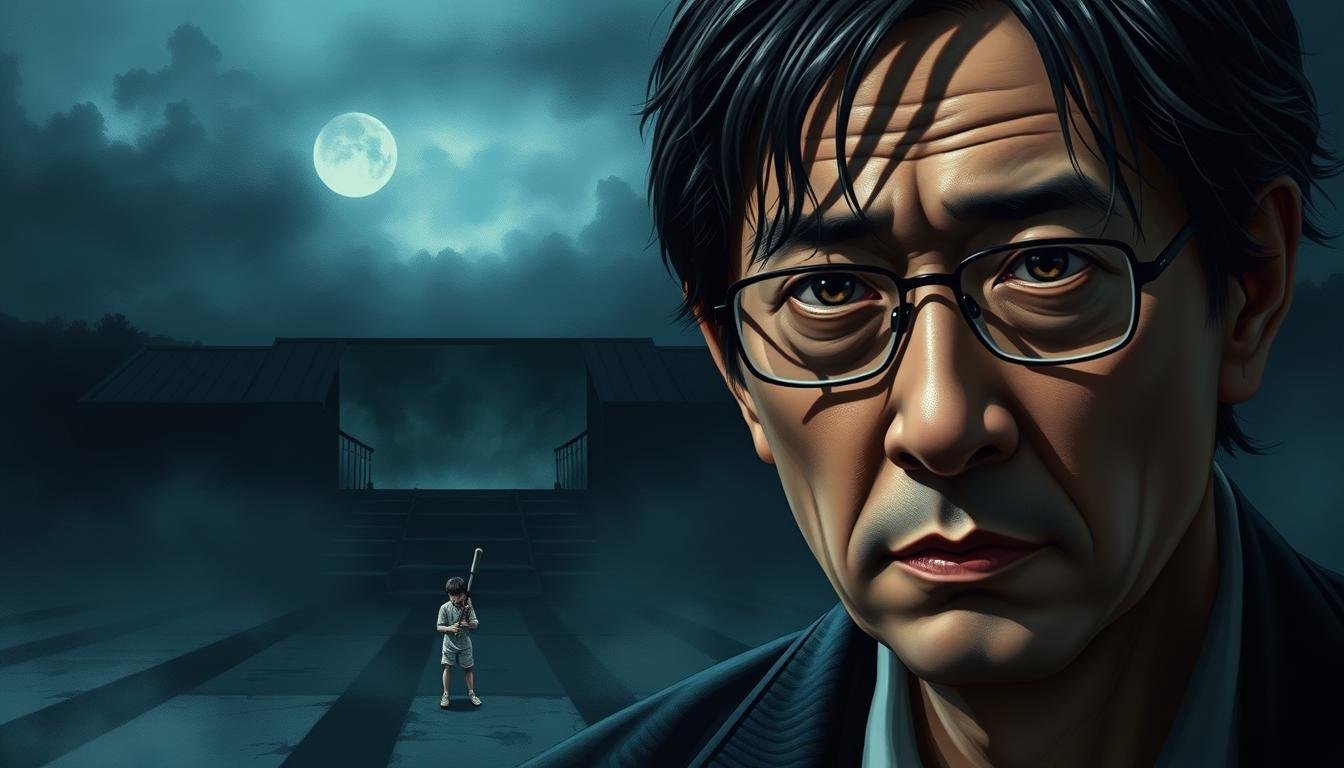Have you heard of Paranoia Agent, a series by Satoshi Kon? It’s a psychological thriller that shows Tokyo’s darker side. It talks about social pressure, identity, and the mix-up between reality and fantasy.
In Paranoia Agent, you’ll find out why it was banned in Japan. Its dark and deep story was too much for some viewers. Satoshi Kon is known for his complex work, and Paranoia Agent is a prime example. It shows the issues that led to its ban.
Learn why Paranoia Agent was banned and the importance of Satoshi Kon’s work in Japanese animation.
Contents
- 1 The Truth Behind Paranoia Agent’s Controversial Status
- 2 Understanding Paranoia Agent: Satoshi Kon’s Psychological Thriller
- 3 Why is Paranoia Agent Banned in Japan? Examining the Controversy
- 4 Japanese Anime Censorship and Content Regulation
- 5 Cultural Impact and International Reception
- 6 Conclusion
- 7 FAQ
- 7.1 Why was Paranoia Agent banned in Japan?
- 7.2 What is the main theme of Paranoia Agent?
- 7.3 Who is the creator of Paranoia Agent?
- 7.4 What is the significance of Episode 8, "Happy Family Planning"?
- 7.5 How does Paranoia Agent portray mental health issues?
- 7.6 What are some other anime shows that have been censored or banned?
- 7.7 How did the controversy surrounding Paranoia Agent affect its reception?
- 7.8 What is the cultural impact of Paranoia Agent?
The Truth Behind Paranoia Agent’s Controversial Status
The anime Paranoia Agent caused a stir in Japan for its honest look at society’s pressures. You might know the series, but to really get its impact, we need to dive into its themes.
Directed by Satoshi Kon, Paranoia Agent explores the minds of its characters. It shows the intense stress and anxiety found in today’s Japan. The series also touches on mental health, feeling alone, and how society’s expectations can weigh on people.
The controversy around Paranoia Agent comes from its honest look at these themes. The anime doesn’t hold back in showing the darker sides of Japanese culture and society. This resonated with some but also sparked debate among critics and viewers.
| Theme | Representation in Paranoia Agent | Impact on Audience |
|---|---|---|
| Mental Health | Raw portrayal of stress, anxiety, and psychological breakdowns | Resonance with audiences experiencing similar issues |
| Social Commentary | Critique of societal pressures and expectations | Sparked debate among viewers regarding Japanese societal norms |
Looking into the controversy around Paranoia Agent gives us insight into anime’s role in culture. It shows how anime can mirror and shape views on mental health and other sensitive topics.
Understanding Paranoia Agent: Satoshi Kon’s Psychological Thriller
Paranoia Agent grabs your attention with its story, but its depth is what truly stands out. Satoshi Kon’s work is more than a thriller. It’s a deep dive into the human mind, exploring themes that touch us all and are uniquely Japanese.
This anime is known for its complex storytelling and characters. It tells the tale of “Lil’ Slugger,” a mysterious figure that attacks when people are at their lowest. Kon uses this story to critique our society, showing how stress and pressure can push us to the edge.
Social Commentary on Japanese Society
Paranoia Agent is a harsh critique of Japanese society. It shows how the demands of today’s world can overwhelm us. The anime paints a picture of a society that pushes people to their limits.
Representation of Mental Health Issues
The series also tackles mental health with sensitivity. It shows characters dealing with deep psychological scars. Through them, Paranoia Agent sheds light on the challenges of mental health and how society affects it.
| Theme | Description | Significance |
|---|---|---|
| Social Commentary | Critique of modern Japanese society and its pressures. | Highlights the societal factors contributing to mental health issues. |
| Mental Health Representation | Portrayal of characters struggling with psychological trauma. | Provides insight into the complexities of mental health and the impact of societal pressures. |
In conclusion, Paranoia Agent is more than just a thrilling story. It’s a deep exploration of what it means to be human. This makes it a standout in the world of psychological thrillers.
Why is Paranoia Agent Banned in Japan? Examining the Controversy
The controversy over Paranoia Agent in Japan came from its honest look at society. This anime, a psychological thriller, dealt with tough themes. These themes hit home with viewers but also got a lot of backlash.
Episode 8, “Happy Family Planning,” was a big point of contention. It showed the stress of modern family life and the high expectations, especially for women.
Episode 8: “Happy Family Planning”
Episode 8 focused on Taeko, a woman under pressure to be the perfect wife and mom. Her story was a harsh critique of Japan’s norms.
The debate around this episode wasn’t just about what it showed. People worried it could harm those who were already struggling.
Other Problematic Content
Paranoia Agent had more than just Episode 8 causing trouble. It showed violence, tackled grown-up themes, and criticized modern Japan. These were all reasons it was banned.
| Controversial Element | Description | Impact on Reception |
|---|---|---|
| Episode 8: “Happy Family Planning” | Portrayal of societal pressures on women | Criticism for perceived negative influence |
| Depiction of Violence | Graphic scenes of violence and mental distress | Concerns about impact on vulnerable viewers |
| Critique of Modern Society | Scathing critique of Japanese societal norms | Debate about anime’s role in social commentary |
The ban of Paranoia Agent in Japan shows the tough issues in anime regulation. Its mature themes and graphic content were reasons for the ban. Yet, they also made it a hit and a cultural touchstone.
The controversy around Paranoia Agent was complex. It involved the anime’s content and its effect on society. This makes it a key example of the challenges in the anime world.
Japanese Anime Censorship and Content Regulation
Have you ever wondered why some anime shows are banned or heavily censored in Japan? The controversy over Paranoia Agent is just one example. Japanese anime censorship has been a big issue for a long time. The rules for anime content are complex, covering broadcasting and distribution.
Exploring Japanese anime, you’ll see that content regulation is a big worry. Anime creators face a tough challenge to make sure their work is okay for broadcast. This is especially hard when dealing with mature themes or sensitive topics like mental health.

Anime censorship affects the industry in many ways. It can protect viewers from content they might find objectionable. But it can also limit the creativity of anime makers. This might stop new ideas and diversity in anime.
Similar Cases: Psycho-Pass, Death Note, and Others
Shows like Psycho-Pass and Death Note have also faced censorship. These anime push the limits of what’s seen as acceptable. They explore deep themes and complex moral questions. Looking at these examples helps us understand the complex world of Japanese anime censorship.
But censorship isn’t just a Japanese issue. Fans all over the world deal with content regulation. The debate on censorship is always changing.
Cultural Impact and International Reception
Satoshi Kon’s Paranoia Agent has sparked controversy but also become a global phenomenon. It’s known for its deep themes and complex characters. The anime explores societal pressures, identity, and the mix of reality and fantasy, touching hearts worldwide.
The series is celebrated for itssocial commentary. It offers insights into human nature, reaching beyond cultural lines. Paranoia Agent critiques our modern world, focusing on media control and the mental health impacts of city life.
| Aspect | Description | Impact |
|---|---|---|
| Themes | Exploration of societal pressures, identity, and reality vs. fantasy | Resonance with global audiences |
| Characters | Complex, multi-dimensional characters | Enhanced viewer engagement and empathy |
| Social Commentary | Critique of modern society, media manipulation, and urbanization effects | Provoked thought and reflection among viewers |
Paranoia Agent, a key work by Satoshi Kon, still shapes anime today and inspires creators. Its global acclaim shows anime’s power in bridging cultures. Expect to see its influence in future anime that delve into similar themes and storytelling.
Conclusion
You now know about Paranoia Agent’s banned status in Japan. This shows how anime, culture, and censorship are linked. The anime talks about society’s pressures, mental health, and the mix of reality and fantasy. It still connects with people all over the world.
Thinking about Paranoia Agent shows it’s more than a thriller. It’s a look at what it means to be human. Its themes and messages are still important today. They make us think about anime, censorship, and culture.
Paranoia Agent’s legacy reminds us that anime can show and challenge our norms. You’re invited to check out more of Satoshi Kon’s work. Join the talks about anime, censorship, and culture’s impact.
FAQ
Why was Paranoia Agent banned in Japan?
Paranoia Agent was banned in Japan for its mature themes. It showed mental health issues and social commentary. Some scenes were disturbing, causing worries about its effect on viewers.
What is the main theme of Paranoia Agent?
Paranoia Agent is a psychological thriller. It looks at the pressures of modern Japanese society. It covers mental health, trauma, and the impact of societal expectations.
Who is the creator of Paranoia Agent?
Satoshi Kon created Paranoia Agent. He’s a famous Japanese anime director and screenwriter. He’s known for other acclaimed anime films.
What is the significance of Episode 8, "Happy Family Planning"?
Episode 8, “Happy Family Planning”, is key. It deals with family issues and societal pressures. These topics added to the anime’s controversy.
How does Paranoia Agent portray mental health issues?
Paranoia Agent shows characters facing mental health struggles. It highlights psychological trauma, anxiety, and more. This offers a deep look into mental health’s importance.
What are some other anime shows that have been censored or banned?
Shows like Psycho-Pass, Death Note, and Neon Genesis Evangelion have faced censorship or bans. They’re known for mature themes, violence, or sensitive content.
How did the controversy surrounding Paranoia Agent affect its reception?
The controversy made Paranoia Agent more famous. It sparked debates among fans. This affected its reputation and legacy in anime.
What is the cultural impact of Paranoia Agent?
Paranoia Agent has made a big cultural mark. It has influenced viewers worldwide. It’s part of the conversation on mental health, societal pressures, and anime’s role in culture.

Marcellus Stark is an investigative journalist from San Francisco, USA. He writes about global bans, rules, and unusual laws. He shares clear, interesting, and well-researched stories that help readers understand surprising facts worldwide.

